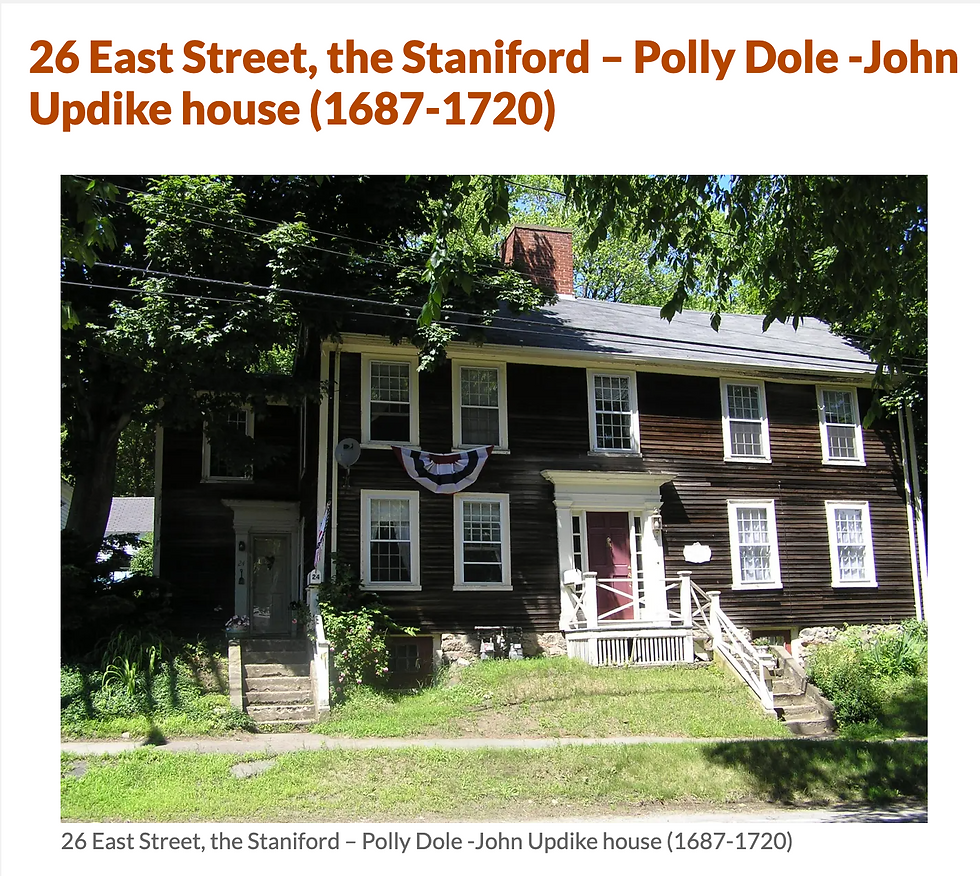Daughter of the American Revolution
- alison hart

- Jun 26, 2022
- 3 min read
Updated: Mar 17, 2023

Above right: My Great Grandmother Emma Freeman who was Passamaquoddy Native American and Black with her daughter Beatrice in Brunswick, Maine. Photo credit: Maine's Visible Black History by Price and Talbot, 2006.
I woke up to a fife playing in my head. Every Fourth of July Minute Men in blue-grey uniforms and tricorn hats marched down Lincoln Road in Lincoln, Massachusetts, led by the trill of the fife and the drum. It was the same tune every year. And there I was, my small brown fist waving a flag walking behind people in cars throwing out candy and children on decorated bicycles. I decided to walk in the parade in my red, white and blue t-shirt and blue shorts, in a parade of whiteness, yet I walked.
"What is she doing there?"
"Why is she walking alone?" Two white women smirked from the crowd. I didn't care. I had to walk, something made me.

I didn't know then that my Black and Native American ancestor fought in the American Revolutionary War. I didn't know that my ancestor Peter Freeman along with his wife Jane and children were enslaved in Ipswich, Massachusetts by Thomas Staniford and Philip Lord near the house that later was owned by the famous writer John Updike which still stands today. Peter Freeman's son John Freeman fought in the Revolutionary War and after his service moved with his brother Peter Freeman Jr. to Brunswick, Maine to live with their mother Jane, who married Anthony Griffin after the death of her husband.
In 1833 at the age of 72, John Freeman petitioned the court in Bath, Maine to receive his pension for his service in 1777 with the help of his siblings Peter Jr. and Jane (same name as his mother) providing statements of support. It is uncertain whether he received his pension for his service in the war.

Photo credit: www.historicipswich.org
Something in me knew I had deep belonging. I grew up steeped in whiteness, the parade was the pinnacle celebration of the complete erasure of Black and Indigenous American history. My cells were the only interception, my connection, feet on the earth marched because deep down I felt my roots. Little did I know then that I was a Daughter of the American Revolution.
Black and Indigenous New England history is hidden. The narrative of New England as the righteous abolitionist territory has overshadowed the fact that Blacks and Natives were enslaved in New England. We weren't taught Black and Native history in school, only given the perspectives of the white patriots, countless battles, and historical houses. But we never learned who was enslaved in the houses, who built the houses, who worked and created the wealth, nor about Black and Native soldiers: my ancestors were effectively erased from history.
And that's why I keep writing, perhaps from rage, mixed with a drive to find out who my ancestors were and to finally give them a voice, to honor their struggle that brought me here.
*****
Special thanks to historian James Tanzer for the petition documents filed by John Freeman, my sister Lisa Terrell for sharing her extensive knowledge of Native and Black New England history, and the book Maine's Visible Black History by Price and Talbot for the incredible resource for my family and many Black families from Maine.
Hart is the author of Mostly White, a mixed-race intergenerational family saga loosely based on her Passamaquoddy Native American, Irish and Black ancestors in Maine which best-selling, award-winning author Isabel Allende praised as "So compelling it gave me goosebumps..."
Hart has finished her second novel based on her ancestors who escape from slavery through the underground railroad, fight in the Civil War, and survive the racism of the eugenics movement in Maine with fierce love and determination showing up in the next generations.
Copyright © 2022 by Alison Hart







Comments